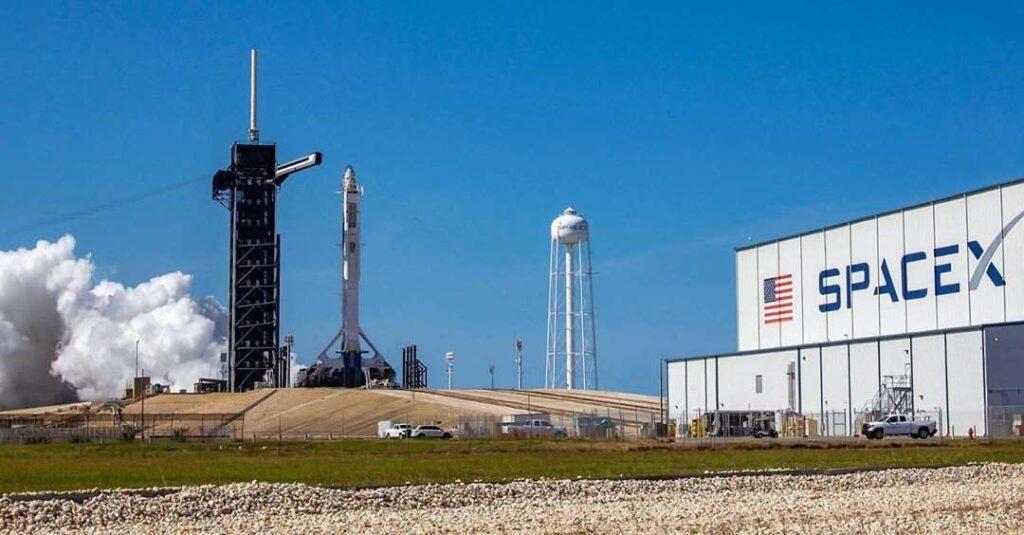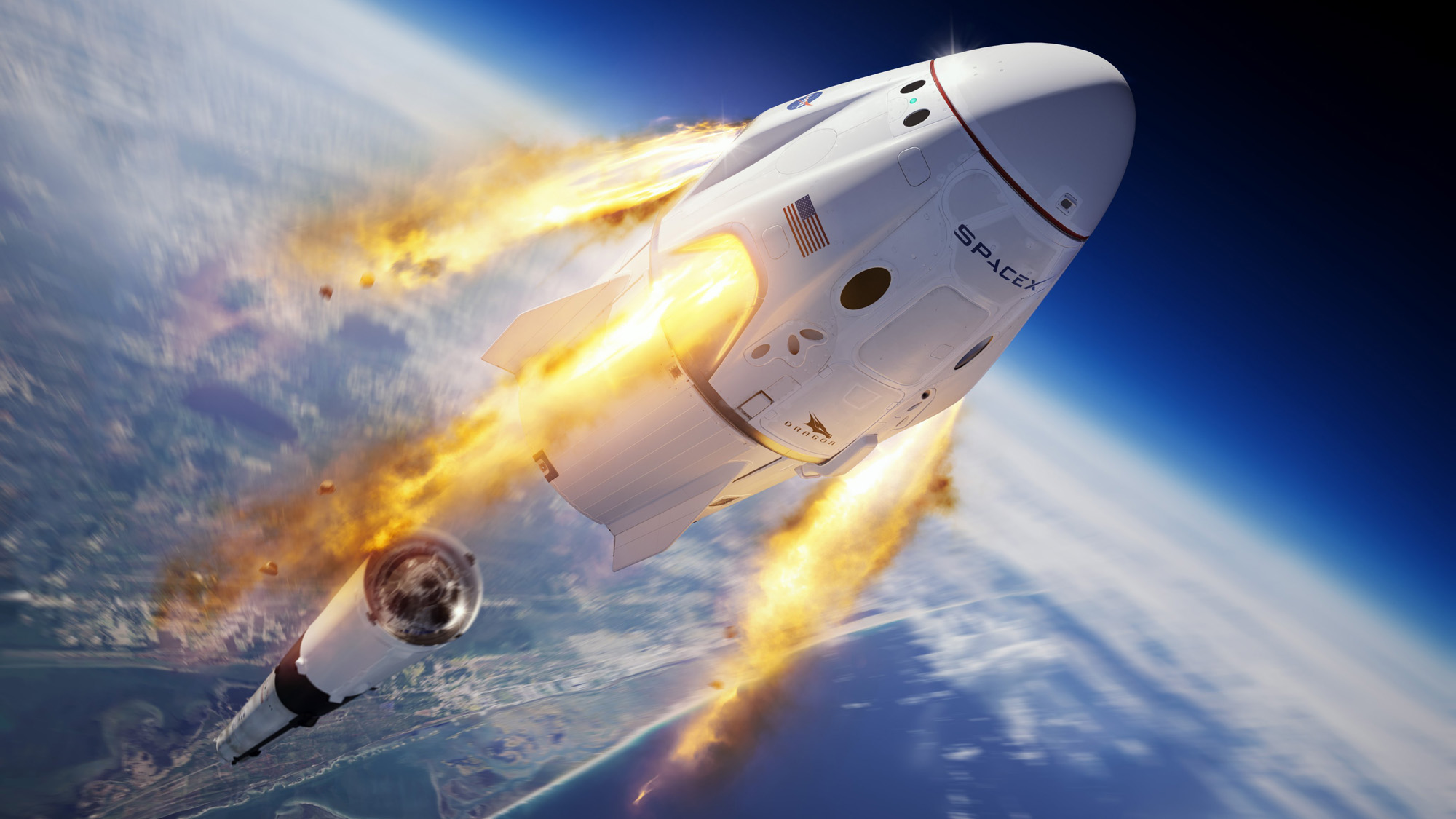The pursuit of uncovering the mysteries beyond our sight, the enigmas concealed within the cosmos, and the boundless wonders that space hides have perpetually captivated the human imagination. In an endeavour to address the myriad questions that occupy our thoughts, humanity launched space missions to unveil answers to satiate our curiosity.
Without a doubt, space missions offer substantial advantages, both in material and abstract terms. These include broadening the frontiers of human knowledge, bolstering a nation’s economic standing, propelling progress in science and technology, fostering international collaboration among countries with a common interest in space exploration, and a multitude of other benefits.
Nonetheless, beyond these advantages, space exploration brings about a significant threat in the form of pollution, particularly regarding carbon emissions. These emissions pose a substantial risk to the well-being of Earth’s inhabitants and the overall atmosphere and have the potential to impact the execution of space missions in various ways.
“Exploration is wired into our brains. If we can see the horizon, we want to know what’s beyond” ~Buzz Aldrin
The scarcity of discourse regarding the effects of carbon emissions on space missions can be attributed to two primary reasons. Firstly, the apparent benefits of these space missions outweigh their adverse consequences. Secondly, the space industry operates on a relatively modest scale, with only a few missions conducted each year, rendering the environmental impact of this sector negligible when compared to others.

Enhancements in space travel missions
Nevertheless, the landscape of space exploration and its associated emissions has undergone significant transformation in recent times. The frequency of space missions has surged, propelling an intensified push for even more triumphant ventures. Space X released 61 rockets in outer space in 2022 alone, setting the bar for space mission provisions exceedingly high.
Elon Musk, SpaceX’s CEO, stated that the ultimate design goal for Starship is to launch up to three times a day, equivalent to approximately 1000 flights a year, with the hopes of reaching the goal of at least one flight every two weeks in 2023. Currently, the Space X launch rate out of Florida is only at least once every three days. By 2024, the company aims to increase space launches and increase the launch rate to once every two days.
Consequently, with these advancements, it is inevitable that emission levels will increase, thus amplifying the environmental consequences.
Unmasking the Concerns
- Emanation of Noxious Substances
Different types of emissions are discharged from rocket engines, contingent upon the specific type of fuel utilized. The four prevalent types of propellants include kerosene, hypergolic fuels, liquid hydrogen (cryogenic), and solid fuels. The rocket launch exhaust releases gases such as carbon dioxide with traces of black carbon and alumna. These gases capture heat and sunlight, with black carbon, a significant constituent of soot, being particularly effective in this regard. Soot possesses the capability to absorb light across all wavelengths, rendering it a potent contributor to atmospheric and climatic impacts.
- Repercussions on Ozone
The act of launching rockets is a significant emitter of black carbon and alumina, leading to the warming of the stratosphere. Moreover, the elevated temperatures during rocket launch and re-entry induce the formation of nitrogen oxides, which damage and deplete the ozone in the stratosphere layer of the atmosphere. The emission of other elements, like NOx and HOx, has the potential to significantly harm the ozone layer by accelerating its depletion rate. Researchers caution that without adequate regulation, rocket emissions could surpass the ozone depletion caused by Ozone-Depleting Substances (ODSs) by the year 2050.
- Reverberations of the Emissions
Considering the extent of emissions produced by rocket engines and their impact on the ozone layer, it represents a substantial concern that warrants close attention. Scientists estimate that during launch, “rockets can emit between 4 and 10 times more nitrogen oxides than Drax, the largest thermal power plant in the UK, over the same time period”.
Swift depletion of the ozone layer results in heightened UV radiation reaching the Earth’s surface, resulting in a rise in the occurrence of eye cataracts, skin cancer, as well as immune and genetic irregularities. The worldwide reduction in stratospheric ozone is strongly associated with the increasing presence of chlorine and bromine in the stratosphere, originating from the production and release of CFCs and other halocarbons.
Halocarbons are industrially manufactured for various purposes (in refrigerators, air conditioners, and industrial chillers), propellants for aerosol cans, agents for creating plastic foams, firefighting materials, and solvents for dry cleaning and degreasing.
In a separate 2019 report authored by the Center for Space Policy and Strategy, the issue of space emissions was likened to the challenge of space debris, which the authors argued poses an existential threat to the space industry. They wrote, ‘Today, launch vehicle emissions uniquely parallel the space debris problem. Rocket engine exhaust released into the stratosphere during the journey to orbit has a detrimental impact on the global atmosphere.
While the current effects of rockets on the global atmosphere are relatively minor in comparison to other human activities, the expanding scope of space missions, each with its distinct objectives, underscores the need to establish and enact policies aimed at mitigating the potential risks posed by rocket emissions to both the natural and operational environments.
Identifying ways to address the challenge
While the extent and diversity of rocket emission effects remain unclear, the environmental impacts of these explorations are becoming more significant with the growing popularity and feasibility of space tourism. Various measures can be taken to enhance the environmental sustainability of space missions.
- National Environmental Policy Act
The environmental consequences of space launches fall within the purview of the National Environmental Policy Act (NEPA). In the past decade, NEPA statements on the environmental impact of launches have indicated that these space launches have no discernible short-term or long-term effects apart from temporary ground-level impacts.
At present, the primary focus of space missions extends beyond cargo transportation to the International Space Station and satellite launch services. It now encompasses in-space transportation, planetary explorations, crewed missions, suborbital transportation, and space tourism. As the number of rocket launches continues to increase, it might become crucial to consider the cumulative impacts in the future.
It is evident that substances beyond carbon compounds are emitted during the launches of these space missions. Consequently, regulations concerning the monitoring and assessing all types of emissions should be incorporated into NEPA. When addressing cumulative impacts, NEPA’s statements should encompass a comprehensive examination of all the noxious and detrimental substances released to provide an accurate assessment of the magnitude of the challenges at hand.
- Clean Air Act
The Clean Air Act of 1970 is a federal law that regulates air emissions from stationary and mobile sources. Environmental Protection Agency (EPA) considers rocket launching as the mobile source, and hence the rocket launch emissions are not considered.
In 2021, the EPA established regulations for controlling aeroplane greenhouse gas emissions. Similarly, as the provision of space missions continues to expand, it is imperative for the EPA to enact rules and establish standards for rocket launch emissions. It’s worth noting that monitoring should not be limited to greenhouse gases but should also encompass other pollutants like carbon particles.
- Grasping the value of space missions in the context of climate intervention
It is crucial to recognize the importance and the delicate nature of climate intervention in the context of space missions. Sensors can be installed on space vehicles to calculate the amount and type of exhaust gases and pollutant matter released at different time intervals post-launch. These statistics can offer a substantial dataset for assessing and suggesting remedies for the emerging problem of carbon emissions. Elon Musk shares the same thought that opening space for humanity is an aim, but we must make it affordable to do so.
Furthermore, it is essential to develop eco-friendly rocket fuels and propulsion systems that minimize the release of harmful gases and pollutants, thus mitigating the environmental impact of space missions.
Space travel is an exciting venture. Making life sustainable in space demands a lot: Capital, brains, and foresight. With the current levels and concerns of global warming and climate change, it is pivotal to develop effective strategies that will impart two-fold benefit: Satisfy the curiosity of mankind for space exploration and inflict minimum damage on the already deteriorating environmental conditions.
“We’re running the most dangerous experiment in history right now, which is to see how much carbon dioxide the atmosphere…can handle before there is an environmental catastrophe” ~Elon Musk
References:
- https://agupubs.onlinelibrary.wiley.com/doi/10.1029/2021EF002612
- https://www.theguardian.com/science/2021/jul/19/billionaires-space-tourism-environment-emissions
- https://climate.nasa.gov/news/3245/nasa-space-missions-pinpoint-sources-of-co2-emissions-on-earth/
- https://www.theguardian.com/science/2021/jul/19/billionaires-space-tourism-environment-emissions
- https://www.thestreet.com/technology/elon-musk-spacex-2024-starship
- https://www.spacex.com/
Also, Read: History of space exploration

Maira Masood is a BS Biosciences student at NUST, Pakistan. She aspires to be a geneticist and wants to play an active part in spreading scientific awareness through writings.

